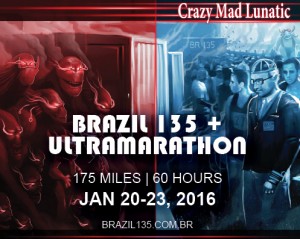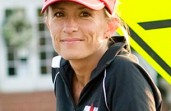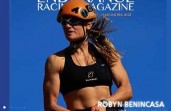Fortune 500 Leadership Coach, Sports Performance Coach
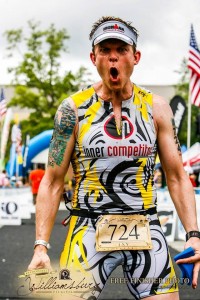 Inner Competitor® Training, Part 1
Inner Competitor® Training, Part 1
Mental ability, also referred to as mental toughness, can be confusing and difficult to define, and is complicated by how elusive it is to train to improve. Yet mental ability is paramount to an athlete and is an area that requires focus in order to improve overall performance.
So let’s try an approach to mental ability to make it simple and powerful. Start with the assumption that our ultimate goal is to accomplish performance improvement and enhance our enjoyment of the sport. If so, then we are guided to find practical and applicable tools – which just so happen to be in the domain of mental ability – that help us achieve that goal.
This series of articles is based on that approach – focusing on the goal of improved performance and enhanced enjoyment of the sport, within the context of mental ability. The framework the articles will follow is based on the sciences and processes of Leadership Coaching.
Let’s begin by asking yourself a few questions.
What is your honest opinion of yourself as an athlete?
When do you find yourself struggling the most?
What do you hear yourself saying when things are not going well during training or racing?
We’ll come back to those questions later. First, let’s talk about an important component of mental ability: your brain.
Here is something every athlete should know: One of the key design principles of the brain is minimize danger and maximize reward. The simplified version is that our brain identifies something as “bad” with a subsequent avoidance strategy, and “good” with a subsequent engagement strategy. Hot stove = bad, avoid.
The way the brain accomplishes avoiding “bad” and engaging “good” is through the mechanism of story (inner voice) and emotion. The brain assesses “bad” and wants us to avoid it; the brain creates a story, and your inner voice starts yelling about it. You will experience some kind of emotional response; emotion is the fuel of action. So before you know it, you are faced with a loud inner voice, an emotion, and fuel to act. Example: Brain assesses hot stove, inner voice yells “Holy crap, ouch”, response is emotion of fear, lots of fuel kicks in and the hand is quickly pulled back from the burner. Fast; efficient.
 Here is the kicker, and why we care as athletes: our brain is quick to assess “bad”, and there is a lot of potential for “bad” as a performing athlete – physical pain (keeping up this running pace), perceived loss (falling short of goals), something important at risk (my identity as an athlete), unexpected challenge (weather, equipment issues), foes (competitors), loss of control (course conditions), winning/losing, and so on. Performing in sports is one big adventure in dealing with our brain’s auto-response to minimizing danger, inner voice, emotions, and fuel to act in ways that counter our peak performance. This auto-response is the root of what derails the best of athletes if gone unchecked.
Here is the kicker, and why we care as athletes: our brain is quick to assess “bad”, and there is a lot of potential for “bad” as a performing athlete – physical pain (keeping up this running pace), perceived loss (falling short of goals), something important at risk (my identity as an athlete), unexpected challenge (weather, equipment issues), foes (competitors), loss of control (course conditions), winning/losing, and so on. Performing in sports is one big adventure in dealing with our brain’s auto-response to minimizing danger, inner voice, emotions, and fuel to act in ways that counter our peak performance. This auto-response is the root of what derails the best of athletes if gone unchecked.
The great news: our brain is trainable! There are methods and approaches athletes can employ to improve performance and enjoy the sport more by managing through the danger-story-emotion-fuel mechanism.
Let’s define the first practical and applicable action to improve your performance. And remember, this is a coaching process – which means step one is step one: The first action on your Inner Competitor® training plan is called noticing – focusing your attention on yourself and your experience. Become intimately familiar with your inner voice and the conditions and experiences that are present. Notice what your brain is labeling as “bad” or “good.” Notice what you say to yourself, notice when you say it, notice everything that you can during the danger/reward-story-emotion-fuel response. You can’t do anything to change the response until you notice it.
You actually have already started this. Recall your answers to the questions at the beginning of this article. What does this suggest about your danger/reward-story-emotion-fuel process?
In the next article, we will continue in the coaching process by building on our noticing. We will learn tools to train ourselves (our brain) in order to improve our performance and enjoy the sport more.
Until then, rock!
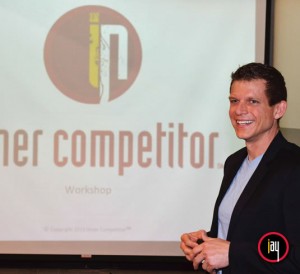 Jay Markiewicz an endurance athlete and highly sought-after Fortune 500 Leadership Coach, Sports Performance Coach, and founder of Inner Competitor® – an organization that works with clients who want to perform better and enjoy their life more. You can contact Jay at [email protected].
Jay Markiewicz an endurance athlete and highly sought-after Fortune 500 Leadership Coach, Sports Performance Coach, and founder of Inner Competitor® – an organization that works with clients who want to perform better and enjoy their life more. You can contact Jay at [email protected].


